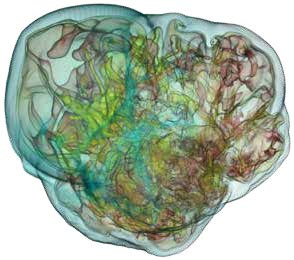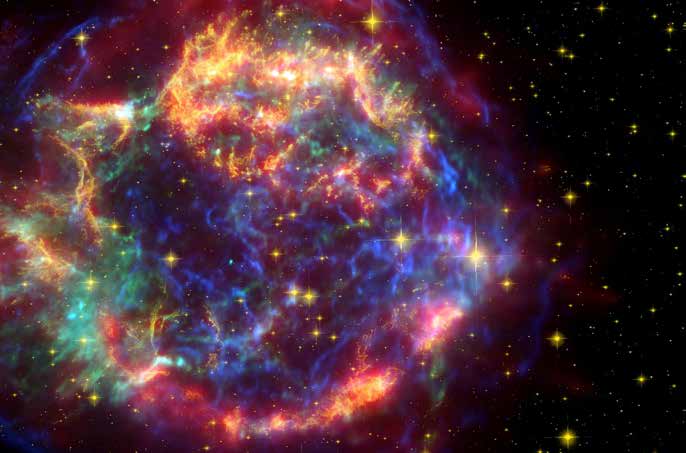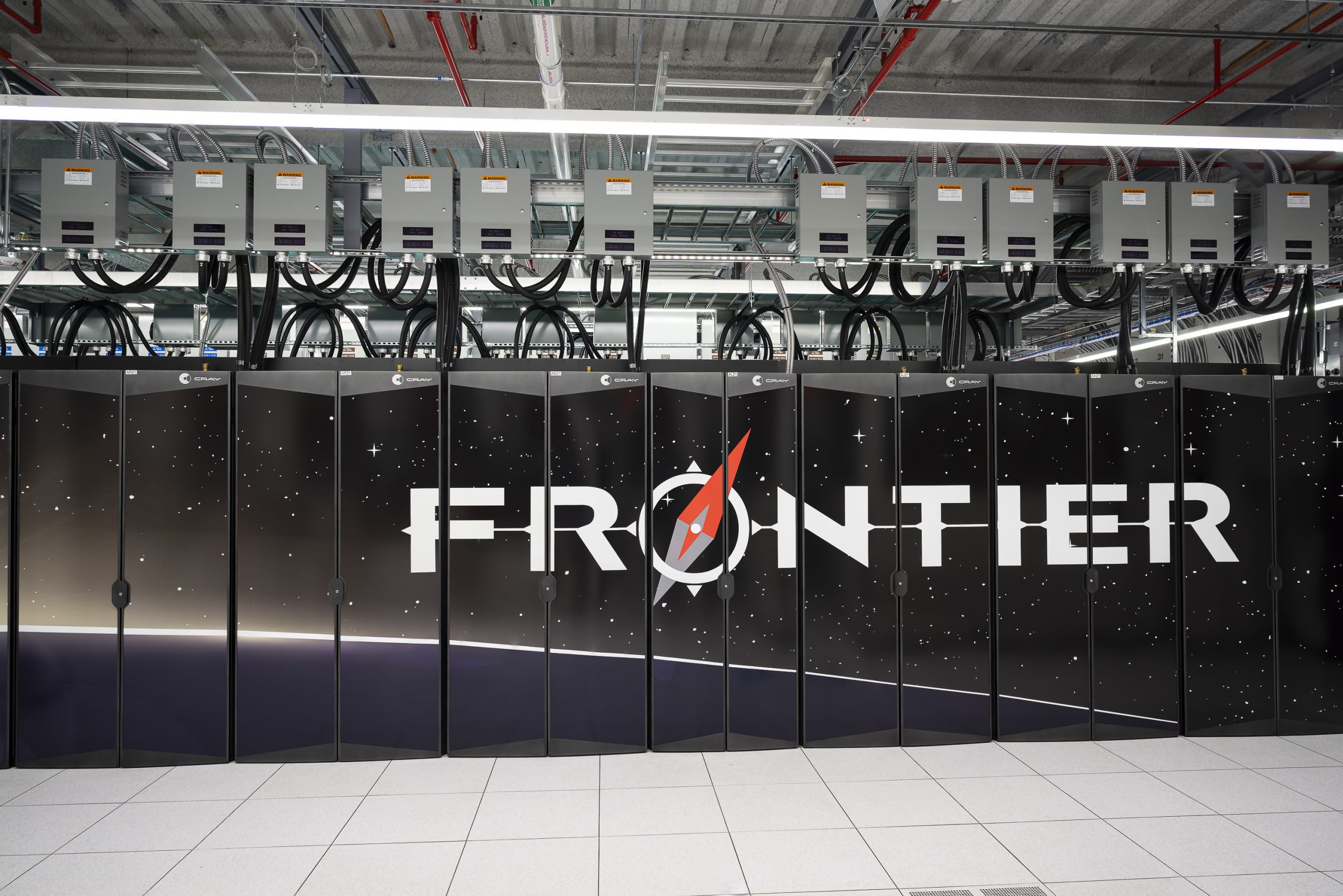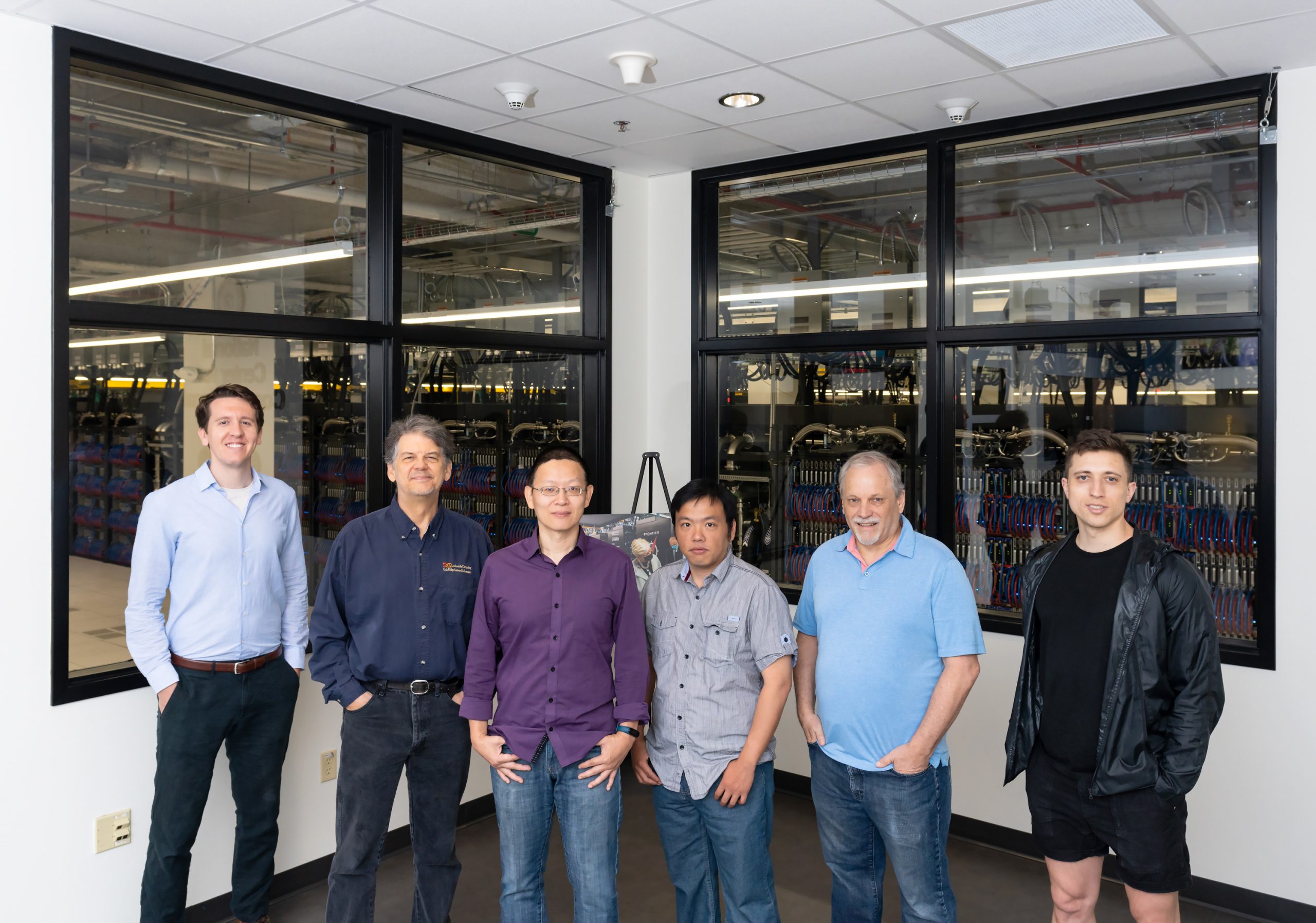In 2017, the Oak Ridge Leadership Computing Facility celebrated 25 years of leadership in high-performance computing. This article is part of a series summarizing a dozen significant contributions to science enabled by OLCF resources. The full report is available here.
In 2003, a group of computational astrophysicists led by ORNL’s Anthony Mezzacappa proved supercomputers can be more than tools for understanding. They can also be tools for discovery.
The team’s simulations of the death of a massive star, known as a core-collapse supernova, revealed a previously unknown phenomenon—a shock-wave distorting feature that emerges in the early stages of a star’s demise and contributes to its eventual explosion. The team named the discovery the “stationary accretion shock instability,” or SASI. After identifying the feature in 2D through work partly conducted on the OLCF’s IBM Power3 Eagle, Mezzacappa and company went on to study SASI in 3D detail using systems such as the Cray X1 Phoenix and Cray XT3 Jaguar.
In 2014, a separate team of astronomers reported observational evidence from high-energy x-ray telescope data that supported the SASI model. The corroboration, concluded from the radiation signature of the Cassiopeia A supernova remnant gathered by the National Aeronautics and Space Administration’s (NASA’s) NuSTAR telescope, is a rare example of simulation predicting a physical phenomenon before it is observed in nature.
The SASI discovery supplied a key piece of missing information in supernova theory, bringing scientists one step closer to understanding stellar explosions and, by extension, the source of most of the elements that make up the world around us, including life on Earth.
The Science

Visualization of the entropy of the inner 250 kilometers of a 15 solar-mass star during a 3D simulation of a core-collapse supernova using the CHIMERA code. Large-scale distortion of the supernova shock can be seen, along with smaller-scale convection.
After the energy-producing processes of nuclear fusion have ceased in a massive star, the star’s iron core collapses to densities greater than those found in an atomic nucleus. The core “bounces” in response, resulting in a rebounding shock wave that pushes outward. Eventually, the shock wave blows most of the star’s mass violently into space. In the process, new elements are produced and scattered throughout the cosmos, seeding the universe with the raw material of new stars, planets, and the life itself.
Between the bounce and the bang, however, lies a mystery of extreme physics scientists have been endeavoring to solve using the most powerful tools available. Only the most advanced supercomputers can supply the processing power necessary to calculate essential supernova physics in a realistic time frame, with some of the team’s simulations consuming tens of millions of processor hours.
Through work conducted on OLCF systems, Mezzacappa’s team contributed two significant pieces to the core-collapse puzzle. The team’s initial discovery demonstrated that the shock wave—stalled by material falling inward toward the star’s core—is unstable, causing it to become distorted. This distortion results in two rotating flows—one aligned with but directly below the shock wave and an inner flow that travels in the opposite direction. The result is a coherent, cigar-shaped slosh.
Additionally, the SASI phenomenon supplied a physics-based explanation for the spins of some pulsars, spinning neutron stars left behind in a supernova’s wake. Before SASI, astronomers had assumed the spin of a pulsar was a result of the spin of the original star. If that were true, however, a pulsar would spin much faster than its larger forerunner, because of the same forces that cause an ice skater to spin faster by pulling her arms in.
SASI provided an alternative theory for pulsars with millisecond-scale spin periods, suggesting that the settling of SASI’s inner flow onto the dying star’s core could serve as the spinning mechanism.
“Once we discovered the SASI, it became very much a part of core-collapse supernova theory. People feel it is an important missing ingredient.” —Tony Mezzacappa, University of Tennessee–Oak Ridge National Laboratory
The Legacy
Today, SASI is a fundamental component of high-fidelity supernova simulations and a widely accepted concept of core-collapse supernova theory. Its computational discovery stands as a testament to supercomputing’s ability to probe some of the most challenging problems in science.
The core-collapse supernova simulations conducted on OLCF systems and subsequent confirmation by astronomers validated the efforts of the computational astrophysics community and its ability to capture the complex physical mechanisms of exploding stars.
Since then, supernova models have built on SASI and other successes to incorporate greater realism by leveraging subsequent leaps in computing power, such as the GPU-accelerated architecture of the OLCF’s Cray XK7 Titan. This work has resulted in improved nuclear reaction networks—the range of elements tracked throughout a simulation—and understanding of neutrino physics, which are thought to play a central role in the star’s explosion.
Ultimately, the community is working toward a complete explanation of how the collapse of a star’s core leads to the explosion that ejects most of its layers. If history is any guide, scientists may find this answer on Earth before seeing it in space.
Related Publication: Blondin, John M.; Mezzacappa, A.; DeMarino, C. (2003), “Stability of Standing Accretion Shocks, with an Eye toward Core-collapse Supernovae,” The Astrophysical Journal, Volume: 584, no. 2. DOI: 10.1086/345812.






